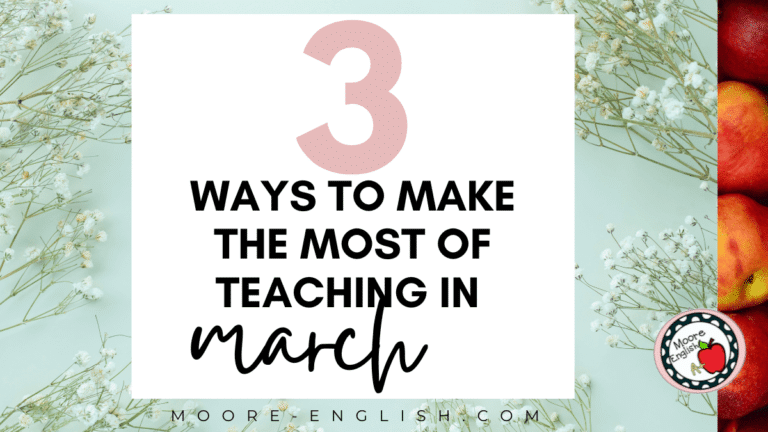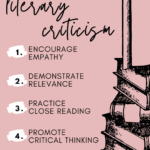I never did literary criticism in high school. And Thursday when I was thinking about texts I wish I’d read in high school, I realized literary criticism was also missing from my high school education.
While literary criticism may seem like an abstract concept for high school students, here are 5 reasons to include literary criticism in your high school literature classes.

This post this post may contain affiliate links. Please read the Terms of Use.
5 Reasons to Teach Literary Criticism
1. Improve critical thinking. First, applying a critical lens to a text requires students to make inferences, analyze text, and synthesize the text with the critical lens. Further, all of these skills improve students’ ability to think critically about a text.
2. Close reading. In order to successfully apply a critical lens, students have to read a text at depth, paying attention to details. This includes figurative language, symbolism, and diction. Such focus improves students’ understanding of a text. Here are 40 texts that lend themselves to close reading!
3. Perspective taking. Because literary lenses have a variety of motives, applying various lenses requires students to “try on” different perspectives. By “trying on” an alternative perspective, students have the chance to understand a different way of life.
4. Encouraging empathy. As students try on multiple lenses and perspectives, they begin to empathize with different causes, beliefs, and value systems. And any practice that encourages students to practice empathy is an essential part of preparing them for life as future leaders.
5. Relevance. Students often ask, “Why do I need to know this? When am I ever going to use this?” Well, literary criticism demands relevance. The Great Gatsby seems dated? Read it through a feminist lens. Shakespeare’s sonnets seem too fluffy? Try deconstruction. Okonkwo is too abusive to deserve a reader’s attention? Check out New Historicism. Each one of these actions requires students to make a text-world connection while synthesizing.
5 Ways to Bring Literary Criticism into Your Classroom
Now that we’ve talked about 5 reasons literary criticism belongs in your classroom, let’s talk about 5 tips for doing so.
1. Lay a strong formalist foundation. First, formalist criticism is the belief that reading a text closely will reveal its unity. So every move a text makes supports a central theme. This is basically the de facto position of every literature class and of standardized assessment. So formalism provides a relatively familiar foundation for students. One of the most unified texts to try this with is To Kill a Mockingbird.
2. Next, move to historical and biographical criticism. After formalist criticism, historical and biographical criticism are the most natural for students. So moving in this direction makes a lot of sense. Check out texts for introducing historical and biographical criticism here.
3. Now try feminist or Marxist criticism. While it may seem like a jump to move to political theories, these are still relatively “easy” in their most basic forms. While both positions have nuance, these are still low-stress in terms of explanation. Once students master the basics of these critical lenses, you can either add more layers or move on to the more challenging positions. These short stories make great texts for introducing these lenses.
4. Then, choose texts wisely. If you’re going to move on to more challenging lenses (deconstruction, New Historicism, postcolonial, etc.), choose carefully. Some texts lend themselves to some lenses better than others. For example, Things Fall Apart fits well with postcolonial but not as well with a Marxist perspective.
5. Finally, let students play! Regardless of how far you wade into literary criticism, each critical lens provides students with opportunities to play with interpretation. Lastly, let them discuss, argue, and connect to pop culture.
Literary Criticism Favorites
Here are my favorite resources for teaching literary criticism:
- 9-12 Short Stories Bundle
- “Girl” by Jamaica Kincaid
- The Great Gatsby Lit Crit Task Cards
- “A Nun England Nun” by Mary E. Freeman
- Introducing Literary Criticism: 3 Charts and 3 Styles

Picture credit: FW Studios



















